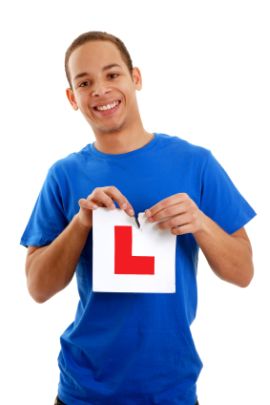Using the foot controls in an automatic
When driving an automatic car, there is one less pedal to think about: there is no clutch pedal so the ABC of accelerator, brake, clutch becomes instead simply accelerator and brake.
That's two pedals and you have two feet. So you should use one foot on the accelerator and one on the brake, right? Well, actually wrong, most would certainly recommend using the right foot to operate both of the pedals, even if this seems odd.
For those who play the piano or a keyboard instrument, if you have to play the same note repeatedly it is recommended that you actually switch fingers where possible when playing the same note. When driving an automatic, it is suggested to use the one foot in most situations.
The reason for this is that it helps with anticipation, alertness and awareness when driving: you have to move your foot from one pedal to the other, and of course it also stops you from performing both operations at the same time, e.g. both braking and accelerating, which clearly is not a good idea and is not good for the long term health of your car either.
The only exception generally given is when driving conditions are such that you are moving slowly, and repeatedly slowing down and speeding up: think queueing in traffic at rush hour and you've got the general idea of when it is fine to have one pedal on each to save having to continually swap, but otherwise it is best to using the same foot to operate the two pedals on the automatic car, accelerator and brake.
Related Articles...
Regular car checks to perform
In addition to the daily checks that you should perform on core elements of your car such as the tyres (see article entitled 'what to check on your car daily') there are various other elements that...
When to expect your licence
The answer to this question depends on whether you have a licence issued after March 2004 or not, which was a photocard driving licence. If so, then you h'll have the option to get it...
Driving Theory Centres
Finding the nearest driving theory centre to you is easy as the government makes this information available to you online.
There is a website that enables you to find the nearest driving...
What to do at a ford
This article is about driving through a ford, not about driving a Ford car.
When you see a warning sign for a ford you should naturally slow down. Then look at the ford and assess the depth...
What to look for when you see a vehicle
Here is a simple check list of things to take into account when you check a used vehicle that you are considering purchasing.
Firstly, look at the engine carefully, and see if you think it has...
What to do at a box junction
The box junction is quite common but despite this there are a whole wide range of ways in which different drivers interpret what they are supposed to do at them so you will see different behaviours...
What to expect at a hazard perception test
The test has fourteen different clips, as outlined in the article entitled 'how to pass the hazard perception test'.
Each of those clips starts counting down from ten to zero, in order to...
The ABC of dealing with casualties
The ABC refers to how to treat casualties if you are involved in an accident but not injured, or indeed if you are at the scene where an accident occurs.
The A refers to the word airway. This...
How to get your provisional driving license
In order to take the theory test, and ultimately the practical driving test, you will need to have a valid provisional driving license. Indeed you need the provisional license in order to be able...
Tips on passing your theory test
It is up to each individual who takes a theory test to do the necessary work and preparation to put themselves in the best position to pass the test.
Rather than attempting to 'cram' the night...
Back to home page of driving theory test questions

